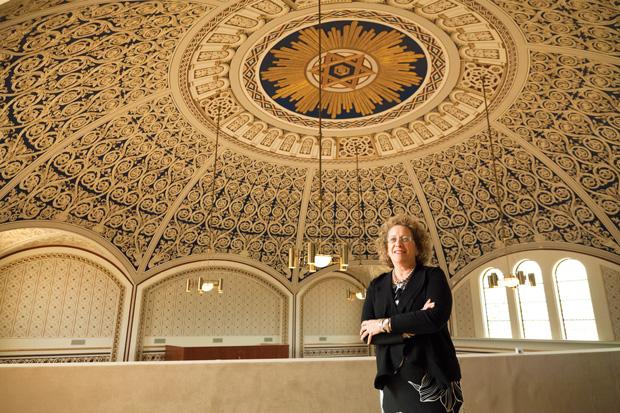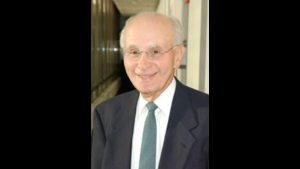Museum chief plans to dig into city’s layers of immigration
Published July 24, 2014
On April 15, Frances Levine took over as president of the Missouri History Museum.
Levine, 63, had been director of the New Mexico History Museum since 2002. She came to the St. Louis museum after its previous director, Robert Archibald, resigned after 24 years in the post, in the wake of a scandal involving a real estate deal that drew loud public criticism of the museum’s governance.
A Connecticut native, Levine earned her bachelor of arts in anthropology from the University of Colorado and a master of arts and doctorate in anthropology from Southern Methodist University. She wrote her thesis on the historical archaeology of three Pecos River land grants near Santa Rosa, N.M.
ADVERTISEMENT
She is married to Tom Merlan, a rancher and historian. They have two grown children, Stephen Merlan and Anna Merlan.
As we began an interview in the small, sunlit Goldstein Room in the History Museum overlooking Forest Park, Levine took off the silver Navajo bracelets she often wears, saying their jangling can interfere with a recorder. She also explained that her turquoise, lapis and jet earrings were created at the Santa Domingo Pueblo in New Mexico.
She drives a tan Suburu Outback with New Mexico plates.
Why did you come to St. Louis? For some, moving here from New Mexico may not make sense.
I have been in New Mexico all of my professional career except for what I call escaping when I went to Australia and when I did field study in Mexico City. I am a person who learns by doing. After I built the New Mexico Museum, the last couple of years, I started to look. I went to India, to Delhi and to Amritsar. Did I want to go back to teaching? Did I want to join the Peace Corps?
I went through a personal thing. My sister died. I had spent 10 years helping her. She lived in Florida. Every six months I’d go spend a week with her to give my brother-in-law a break.
ADVERTISEMENT
It occurred to me I love museum work. Being a director has a public history focus. I had interviewed a few places. When I came here to interview, it all clicked. The Missouri History Museum had been my mentor museum. I came to St. Louis for professional meetings. I spent some time with Bob Archibald, looking at how this museum worked with community. I always used this museum’s website (mohistory.org).
My husband and I came here to celebrate his birthday. We went to Springfield (Ill.) to see all the Lincoln stuff. Crossed the (Mississippi) river to Hannibal. We did a Lincoln and Mark Twain trip. When we pulled into St. Louis in the middle of a rainstorm, I said to my husband, “I could live here.”
Do you like that much of the history of this area reaches to the West?
Absolutely. I worked on an exhibit with the Historic New Orleans collection a few years ago to bring documents of first contact. It’s interesting. There’s this Spanish story here, but it’s layered over. I’m an archaeologist by training. Those connections of common history are really important to me. It was coming to a place that really speaks to me, historically.
I needed several things: a community with a quality of life that was wedded to historic architecture and, as a Jew, I wasn’t a curiosity.
What was it like being Jewish in New Mexico?
I took it for granted before I moved to New Mexico. I grew up in Connecticut, a golden ghetto. That was too claustrophobic for me. I was a late bloomer. I didn’t decide I was going to go to college until after graduation. I got into a hippie college in Maine. I went there one year. My father said, “Enough. You can go to New Mexico, Arizona or Colorado, because you want to do archaeology, and you need to be off the East Coast because your friends aren’t good for you.” He had gone to Colorado, so I went to Colorado. I went to SMU because of the kind of archaeology I was interested in.
You’re bilingual in English and Spanish?
Yes.
Any others?
I swear really, really well in Yiddish.
Are there hidden Jews in the Southwest?
There’s a big story there. I am working on a book about Dona Teresa Aguilera y Roche. I have written a lot about her. She was the wife of the governor in Santa Fe between 1659 and1662. In 1662, she and her husband were arrested by Inquisition officials in Santa Fe and tried on charges of being a Jew. She never was, but it was the way the enemies of her husband used the power of the church to prosecute her.
Are there hidden Jews there today?
There are recent converts who feel they have reclaimed a history that was generations old. There are people whose ancestors were forced out of Spain and Portugal by the Writ of Expulsion of 1492. Some of them have converted [to Judaism], and some of them haven’t.
How are you going to leave the History Museum better than you found it?
I’m continuing to build a very strong relationship with the region. We are working well with other historical organizations and schools at all levels. That’s building on the strengths here.
One thing is a collecting initiative. We need to be more outwardly focused. You work with communities, donors, organizations so they know you are interested in acquiring.
One thing we did in New Mexico was the photo legacy project. That’s where you work with living photographers to take in their body of work, with their correspondence, their writings, their negatives, their cameras. Photographers are especially prolific as artists and documentarians. Their families are often left with these studios full of stuff, and they don’t know what to do with it. I’d like to work with living photographers who have documented St. Louis over time.
Sounds like lots of effort, getting people to think about working with the History Museum.
We want to do that with the African-American community. Their history here is so deep, so important. We have curators and oral historians who have been working with the African-American community but not in that concerted collection effort. Bob Archibald did this beautifully. He built bridges to the African-American community. We need to keep those bridges strong.
The same with some of the new immigrant communities. Our whole next year is focused on immigration. Looking at the German immigration. The Bosnian immigration. There’s a big Hispanic community here. We need to ensure the History Museum is both collecting and preserving the history of the diversity that’s part of St. Louis.
Sometimes exhibits can be controversial. How can you maintain a fidelity to history instead of the story people may want to tell?
In the museum world, it’s called the dialogue process. You work with the affected communities. You work with the development of the exhibition through the interpretation of public programming. You keep dialogue in the forefront. Museums have to be safe places for people to talk about hot-button topics.
I’ve heard your husband still lives in New Mexico.
He lives in both places.
Does keeping a home in New Mexico say anything?
No. We are fully living in both places. We live on his family’s land.
Is your husband Jewish?
He’d consider that a rude question. My husband has not converted, but he practices. He sings in the temple choir. He’d say, “What’s it to ya?” We raised our children as Jews.
Have you found a congregation here?
I am in the schnorrer phase.
Are you Reform?
I am very Reform. I am to the left of Reform. I’ve been to Temple Emanuel and really liked it. [Rabbi] Elizabeth Hersh has been really lovely. I’ve been to CRC (Central Reform Congregation) and [Rabbi] Susan Talve has been very nice.
What will you do for High Holy Days?
I don’t know. Will I spend them with my brother in Connecticut, where I’ve never been? Am I going to go back to New Mexico, because my husband is singing? If he’s not singing, are we going to go to CRC or Temple Emanuel? I went to Temple Emanuel in June for my father’s yahrzeit because I wanted to hear Malachi [Owens] sing Kaddish.
I have a very strong Jewish cultural identity. The High Holidays are very important for me. Passover has gotten to be a very painful holiday. Part of it is I have listened to too many political fights at the Passover table. For me, it’s a time to visit the history and the tradition, and for some people it’s a time to drive their trucks out onto the seder table.
Anything coming up here on the Jews of St. Louis?
Absolutely.I am working still with the museum in New Mexico on the converso exhibit. I don’t think a converso exhibit is right for here. But I think the 250-in-250 exhibit we did looks at the dialogue that has gone on more than 200 years. St. Louis has an interesting Jewish history. That would be an interesting exhibit.
How do you raise money?
It’s a matter of getting known. You work with your core, the board, the volunteers and with the corporations that are the base. Putting yourself out there.
Lots of 12 hour days?
Oh, yeah. I try to write at least one night and one weekend day a week. One day a week, I get up, make a cup of tea and go directly to the computer. I work in 28-minute stints because I have ants in my pants. My daughter is a staff writer for The Village Voice in New York. Anna got me to write in 28-minute segments because I am very distractible and very jumpy. When I finish writing for the day, I leave an unfinished sentence.
What’s your management style?
I delegate, but I check frequently. During Fair St. Louis, we were open. I worked the information desk because it was a way for me to understand what our visitors want.
What did you learn?
How much our staff knows about people and this institution. I worked at one of the booths outside with someone from [human resources] I would never have had the opportunity to work with. She was all ears. She understood what was happening to a crowd of people many, many minutes before I tuned in.
Would you buy a house here?
I don’t want to own anything.
That’s pretty zen.
I am very zen.
















